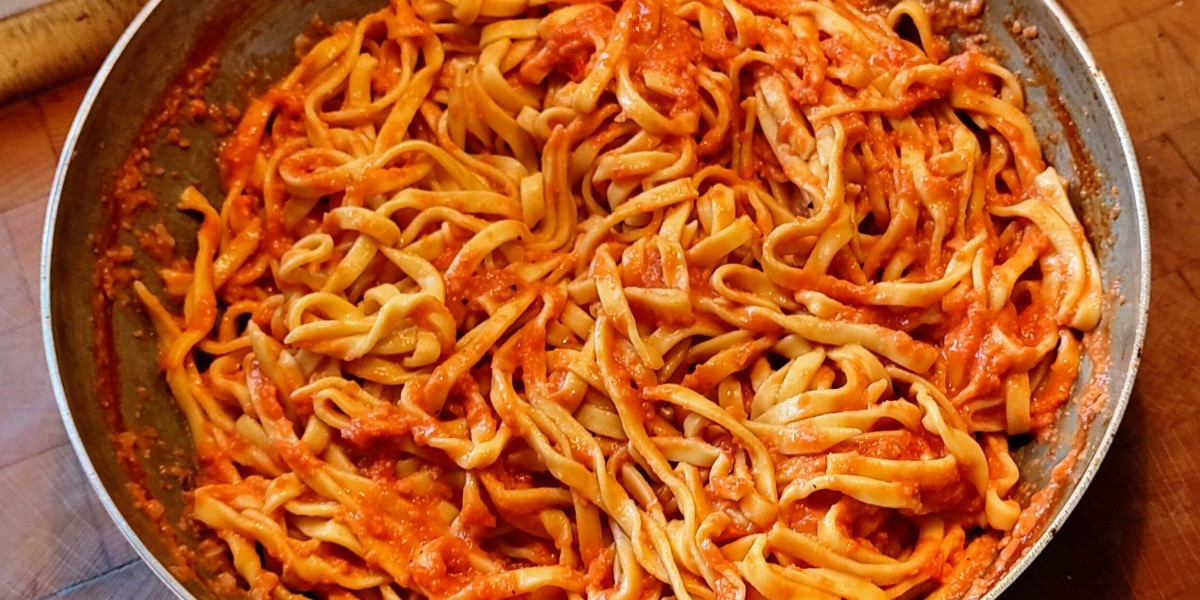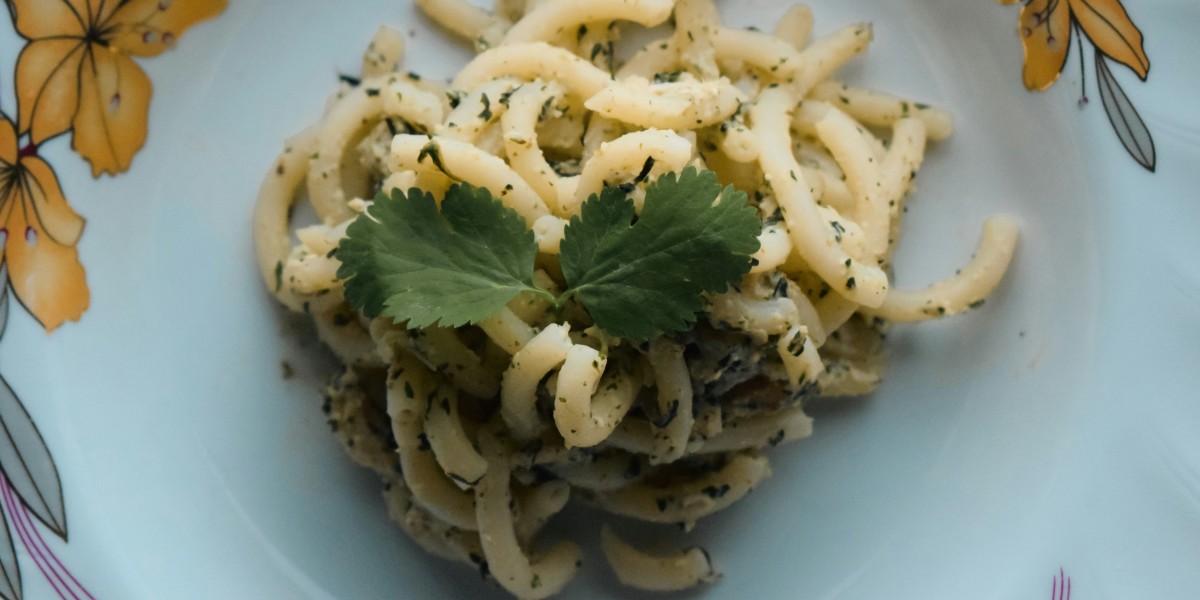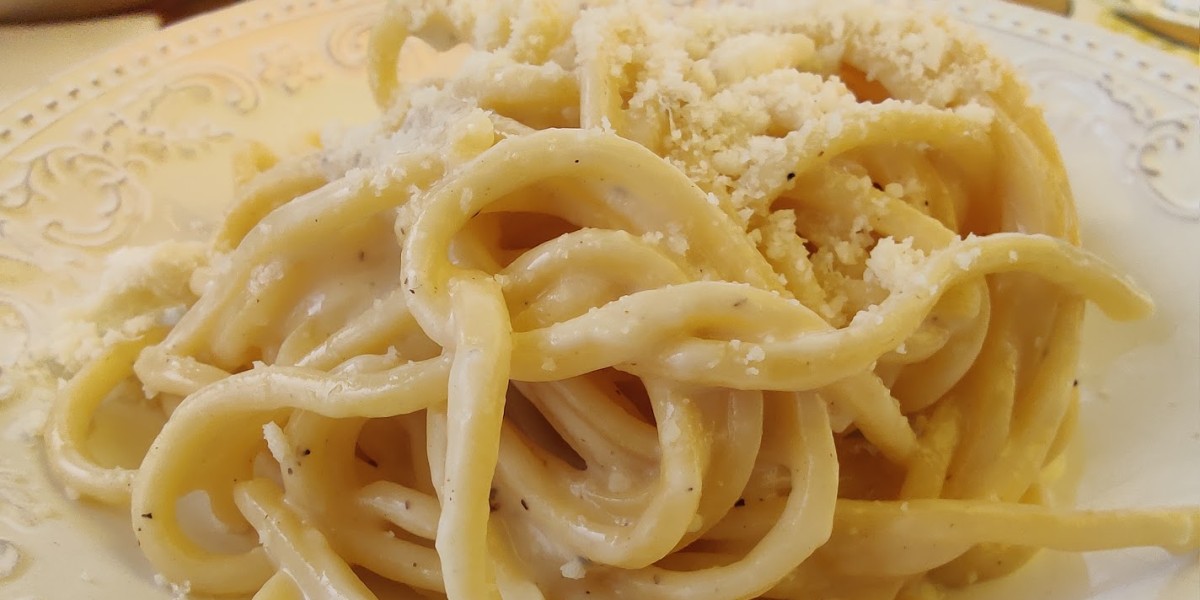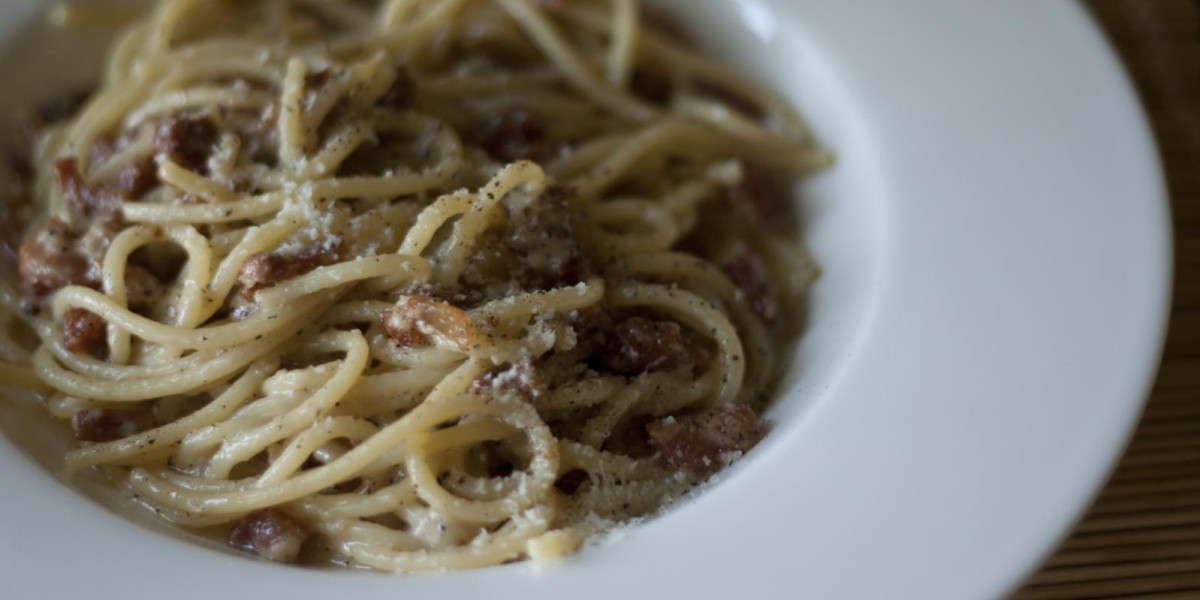
Central Italy is where rustic countryside flavours collide with city flair, and the region’s pasta dishes are all about bold simplicity and proudly local ingredients. With rolling hills, ancient towns and an endless supply of olive oil, pecorino, and forest truffles, you’ll find recipes that work with what the land gives. There’s a noticeable shift here from the cream and butter of northern pasta dishes. Central Italian pasta is punchy, peppery, and often has a countryside roughness that feels deeply satisfying after a day of exploring cobbled streets or wild landscapes.
Local ingredients used in central Italy’s pasta dishes
When it comes to what Italians put in their pasta in the Lazio and Umbria regions, you'll find it's worlds away from the colourful Mediterranean staples often present in southern Italian pasta dishes.
- One of the star players is pecorino romano, a sharp, salty sheep’s milk cheese used to bring bold, tangy depth.
- Then there’s local extra virgin olive oil—fruity and peppery, pressed fresh from groves around Umbria and Tuscany.
- You’ll spot black and white truffles turning up in Umbrian classics, freshly hunted from the oak forests in places like Norcia and Spoleto.
- Guanciale, that melt-in-the-mouth cured pork cheek, is at the heart of many Roman pasta sauces, lending a depth you just can’t get from ordinary bacon.
- And let’s not overlook the ancient, robust wheat varieties grown in the rolling hills, which give handmade noodles their satisfyingly chewy texture and nutty flavour.
Overall, central Italy is a good spot for vegetarians, with dishes such as strangozzi al pomodoro and fettuccine ai carciofi (artichoke pasta) common occurrences on menus.
Best classic pasta dishes from Central Italy
Pici all’aglione (Tuscany, especially )
Pici are thick, hand-rolled noodles, a sort of rustic cousin to spaghetti that holds more sauce and attitude. The classic sauce, aglione, is a vibrant, garlicky tomato sauce that uses a local variety of huge, sweet garlic grown in the Val di Chiana. The dish dates back centuries and is the pride of southern Tuscany—you’ll find excellent plates in the hilltown of Montepulciano or the surrounding villages during summer garlic festivals.
Umbricelli al tartufo (Umbria)

Umbria is famed for its wild black truffles, and umbricelli—a thick, flour-and-water pasta not unlike pici. Traditionally tossed with nothing more than olive oil, a sprinkle of pecorino and fresh shaved truffle, the dish is earthy and rich, letting the quality of the produce shine through. Look for the best versions in Norcia or during Umbria’s annual truffle fairs, when the whole region seems to be perfumed with that unmistakable scent.
Carbonara (Lazio/Rome)
There are few pasta debates more heated in Rome than what makes the perfect carbonara, one of the most traditional dishes of the Lazio region. Forget cream—traditional carbonara is a silky, rich tangle of spaghetti or rigatoni tossed with eggs, sharp pecorino romano, crunchy guanciale (cured pork cheek), and a good grind of black pepper. Believed to have originated around the end of World War II—possibly made popular by charcoal workers (carbonari) or through clever use of American army rations—Roman trattorie like Roscioli or Armando al Pantheon are famous for serving up textbook versions.
Cacio e pepe (Rome)

Cacio e pepe is proof that the simplest things can be the trickiest to get just right—and somehow, the most delicious. Hailing from Rome, this classic dish relies on only three ingredients: pasta (traditionally tonnarelli or spaghetti), pecorino romano cheese, and freshly cracked black pepper. The name literally means “cheese and pepper,” and that’s really all there is to it—no cream, no butter, just starchy pasta water and plenty of patience for stirring.
Strangozzi alla Norcina (Umbria)
Umbrian kitchens are masters at coaxing the most depth from local produce, and strangozzi alla Norcina is a bit of a legend if you’re after rustic, indulgent comfort. The pasta, usually long and square-cut, is tossed with a creamy sauce made from sausage meat, garlic, black pepper and a dusting of grated pecorino. Some versions use a splash of truffle for extra earthiness, especially in chilly weather. The dish carries the name of Norcia, a town forever tied to both sausage-making and truffle hunting.
Tonnarelli alla Gricia (Lazio)

If you like carbonara and cacio e pepe, alla gricia feels like their savoury cousin that’s been around even longer. This Roman favourite keeps it simple with thick, chewy tonnarelli noodles, crispy guanciale, pecorino romano, and cracked black pepper. There’s no egg, just loads of deeply savoury flavour and a glossy pasta that clings to each strand. You’ll come across it in the oldest Roman osterie, especially as a hearty lunch before (or after) a walk up the Aventine.
